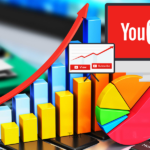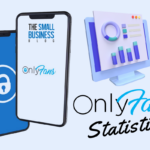Content creation is one of the most popular careers in this digital world. According to research, around 50 million people contribute to the creator economy in 2024.
It is considered the modern digital marketing strategy used by businesses in promoting their products and services to their target audience.
Aside from that, creators create educational, informative, and entertaining content expressed through different platforms including YouTube, TikTok, and Instagram.
Post Contents
How Big is the Creator Economy in 2024?

Creator Economy expanded during the pandemic since people stayed inside their homes.
Many people started creating videos about cooking and baking tips, indoor and backyard planting, and fitness goals and publishing them on different channels.
The most common platforms used by content creators are YouTube, TikTok, Twitch, Instagram, Facebook, and their personal websites.
The report shows that there are about 50 million creators in the content creator economy around the world.
Among the 50 million creators, around 46.7 million are amateur content creators and 2 million are professional content creators.
As of 2022, the creator economy market size is approximately $104.2 billion.
Data reveals that 30 million amateur content creators and 500,000 professional content creators post their content on Instagram.
Aside from that, 12 million amateur creators and 1 million professional creators publish their content on YouTube, and 2.7 million amateurs and 300,000 professionals stream on Twitch.
There are also 2 million amateurs and 200,000 professionals who post on other platforms and channels.
Content creators are open to collaborations with businesses and marketers aside from creating their vlogs, blogs, and Instagram-worthy photos.
62% of marketers tied up with content creators to get more engagement and 42% wanted to generate more revenue.
According to Influencer Marketing Hub’s report, the creator economy market size grew and reached a billion worth in 2021.
Some of the reasons for the mammoth growth in the market size were the increase in the number of creators, improved content creation skills, availability of tools and platforms, and learning how to monetize their videos and other content.
Let’s find out how big is the creator economy worldwide in terms of market size:
- In 2012, the creator economy worldwide reached a market size of approximately $600,000
- In 2013, the creator economy worldwide reached a market size of approximately $4.9 million
- In 2014, the creator economy worldwide reached a market size of approximately $13.7 million
- In 2015, the creator economy worldwide reached a market size of approximately $21 million
- In 2016, the creator economy worldwide reached a market size of approximately $36.2 million
- In 2017, the creator economy worldwide reached a market size of approximately $41.4 million
- In 2018, the creator economy worldwide reached a market size of approximately $52.3 million
- In 2019, the creator economy worldwide reached a market size of approximately $73.1 million
- In 2020, the creator economy worldwide reached a market size of approximately $143.8 million
- In 2021, the creator economy worldwide reached a market size of approximately $104.2 billion
How Content Creators Earn Money?

Most content creators generate income from their videos, podcasts, blogs, photos, and infographics.
Their income depends on the number of viewers, subscribers, and audiences, the number of published content, how long people watched, listened to, or read the content, and the number of ads.
Below are ways how content creators earn additional money:
- Ad revenue sharing and affiliate marketing
- Sponsorships
- Tip
- Donation
- Customized merchandise
List of Media Platforms of Content Creators
Different platforms and channels appeal to diverse audiences.
According to research, the most profitable platform for content creation is YouTube, with approximately $4 billion in total earnings annually.
Etsy comes next with $1.46 billion, followed by Instagram with $460 million. WordPress had $348 million in total earnings and Amazon Publishing had $220 million.
Instagram has the most content creators generating income, with 5.64 million earners.
WordPress follows it with 4.85 million earners, Tumblr with 3.14 million, YouTube with 2.19 million, and Etsy with 928,000.
Here are some of the media platforms used by content creators:
- YouTube – has around 51 million channels and over 2.6 billion users as of 2022. More than 1.3 million channels have at least 10,000 subscribers and over 600 channels have 10 million subscribers
- Instagram – has over 1 billion accounts and 1.44 billion monthly active users as of 2022. About 500,000 are active users and have more than 100,000 followers
- Twitch – has approximately 140 million active users per month and about 8 million monthly active streamers in 2022. Over 300,000 have an affiliate or partner status
Below is a list of media platforms per category:
- For video and streaming, content creators use YouTube, Twitch, TikTok, YouNow, Instagram, Facebook, and OnlyFans
- For photography and graphic designing, content creators use Instagram, Pinterest, Snapchat, Canva, and VSCO
- For music and podcast, content creators use Spotify, iTunes, Soundcloud, and Pandora
- For writing, content creators use Medium, Substack, Twitter, and Quora
Platforms to Monetize Content
Here is a list of other platforms used by content creators to monetize their content:
- Kajabi with 50,000 heroes
- Patreon with 210,000 creators
- Podia with 50,000 customers
- Thinkific with 50,000 customers
- Udemy with 65,000 instructors
Estimation of Content Creators’ Income

Content creators dedicate their time, skills, and knowledge to produce content.
35% of creators exert effort for four years to build their audience, and the average creators earn their first dollar after a six-and-a-half-month journey.
Only 2.93% of content creators make more than $500,000 annually, while 51.53% make less than $10,000 annually.
Content creation is not limited to vlogging, podcasting, advertising, and streaming.
Other content creators are copywriters, SEO specialists, graphic designers, videographers, and video editors.
According to the HubSpot report, the average salary of content creators in 2022 is around $44,192 annually, equal to $3,682 monthly.
Below are some of the roles of content creators in the creator economy with their average annual salary:
- Digital Marketing Manager has an average annual salary of $75,018
- Brand Strategist has an average annual salary of $69,120
- Digital Copywriter has an average annual salary of $67,124
- Content Strategist has an average annual salary of $66,150
- Social Media Manager has an average annual salary of $53,761
- SEO Specialist has an average annual salary of $52,210
- A Videographer has an average annual salary of $47,920
Conclusion
The creator economy is continuously growing. Statistics reveal that an estimated 450,000 full-time content creators contribute to the creator economy.
Most of the content creators are Millennials and Generation Z.
53% of content creators are between 18 to 34 years old, 31% are 35 to 54 years old, and 5% are 55 years old and above.
Americans make up 34% of the total population of content creators in the creator economy worldwide, equivalent to approximately 17 million Americans.
29% of the kids in the country want to become content creators on YouTube.






























